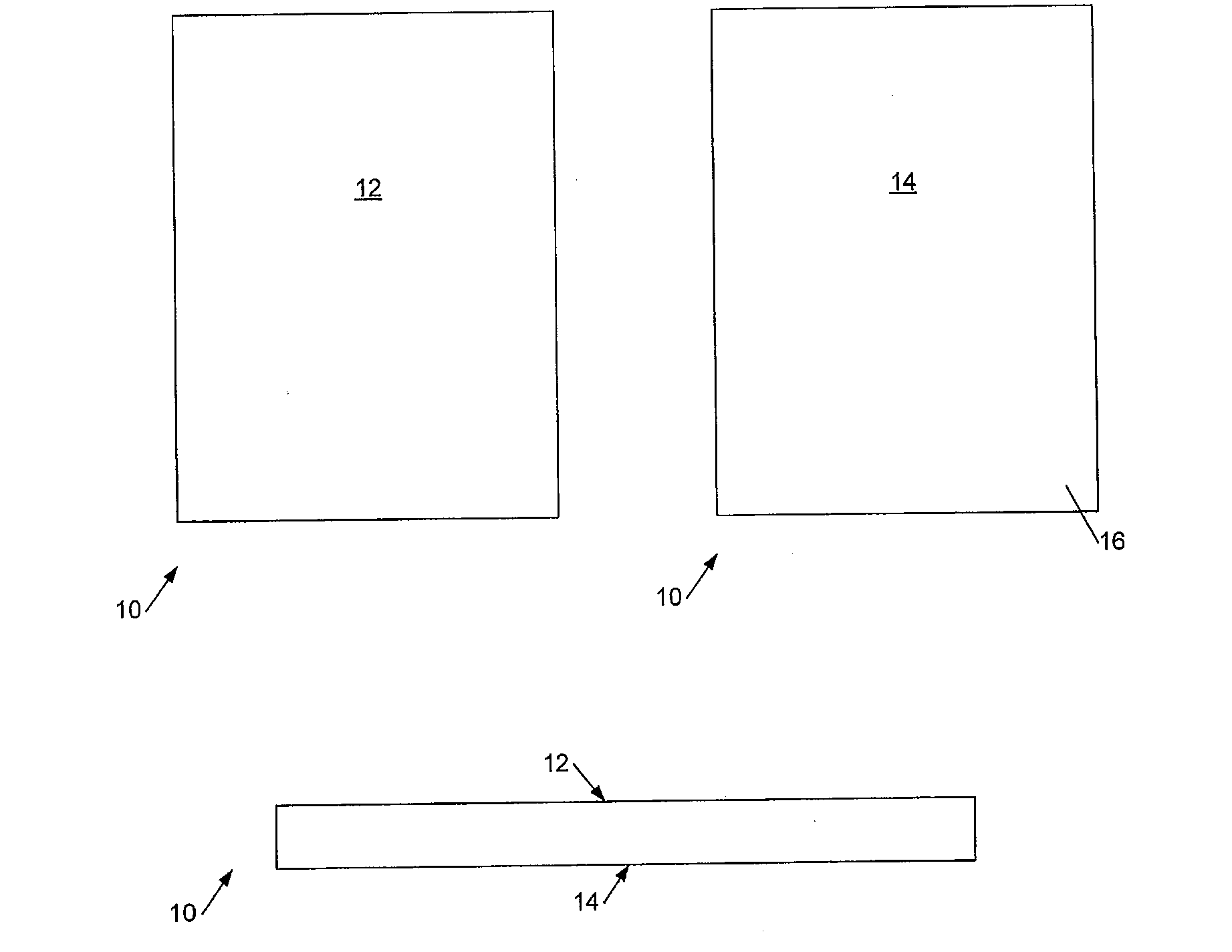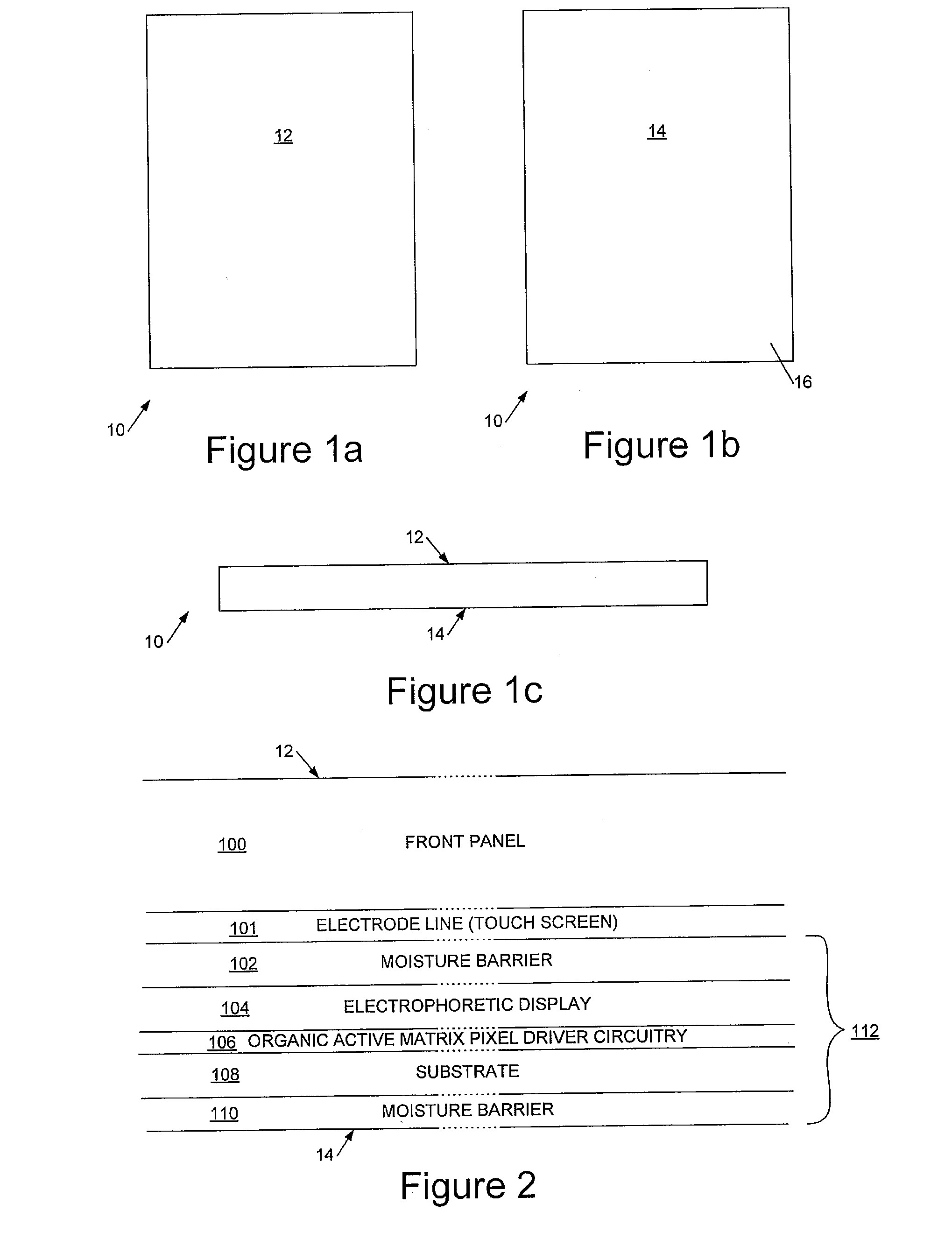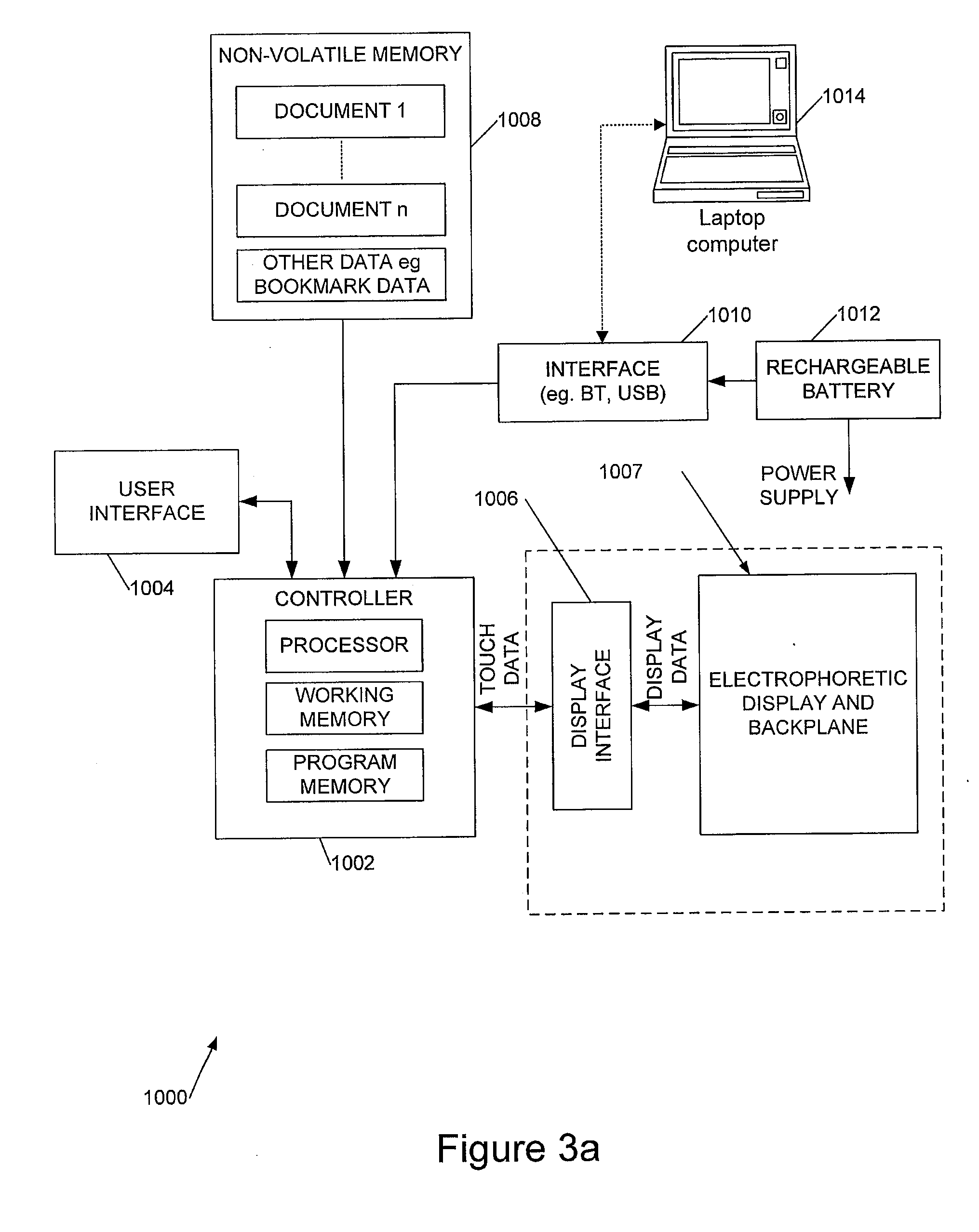Electronic document reading devices
a document reading and electronic technology, applied in the field of thin-film architectures, can solve the problems of large touch screen, thin, special problems of flex-tolerant devices, etc., and achieve the effects of flexing the device, facilitating assembly, and providing flex-toleran
- Summary
- Abstract
- Description
- Claims
- Application Information
AI Technical Summary
Benefits of technology
Problems solved by technology
Method used
Image
Examples
Embodiment Construction
[0041]Referring to FIGS. 1a to 1c, these schematically illustrate an electronic document reading device 10 having a front display face 12 and a rear face 14. As can be seen from FIG. 1c, in preferred embodiments the display surface 12 is substantially flat to the edges of the device, and in particular may lack a display bezel. In some implementations the electronic (electrophoretic) display does not extend right to the edges of the display surface 12, and rigid control electronics are incorporated around the edges of the electronic display—this approach can reduce the overall thickness of the device and thus facilitating flex-tolerance, at the expense of making the overall area of the device slightly larger.
[0042]Referring now to FIG. 2, this illustrates a vertical cross-section through a display region of the device between the frame members 16. The drawing is not to scale.
[0043]As can be seen, in preferred embodiments the device has a substantially transparent front panel 100, for...
PUM
 Login to View More
Login to View More Abstract
Description
Claims
Application Information
 Login to View More
Login to View More - R&D
- Intellectual Property
- Life Sciences
- Materials
- Tech Scout
- Unparalleled Data Quality
- Higher Quality Content
- 60% Fewer Hallucinations
Browse by: Latest US Patents, China's latest patents, Technical Efficacy Thesaurus, Application Domain, Technology Topic, Popular Technical Reports.
© 2025 PatSnap. All rights reserved.Legal|Privacy policy|Modern Slavery Act Transparency Statement|Sitemap|About US| Contact US: help@patsnap.com



